In this episode, we talk about the festival of Holi with our special guest Neha Srivastava who is the founder of Shaktitva.org.
We soak in the reminiscences of Neha ji as she recounts her memories of playing Holi in India, growing up.
Note: If you find our work valuable, please consider making a contribution. It will help us cover the costs of reaching many more Hindu parents.
General Information:
For comments and podcast suggestions, please use the comments tab or write to us at contact@hinduparenting.org
Please note that questions will not be answered on email.
Do subscribe to our Substack and follow our social media handles:
Twitter: hinduparenting
Instagram: hinduparenting
Telegram: t.me/hinduparenting
Threads: hinduparenting
Facebook: facebook.com/hinduparenting
Facebook group: facebook.com/groups/hinduparenting
Koo: hinduparenting
The opinions expressed by guests on The Hindu Parenting Podcast are their personal opinions and Hindu Parenting does not assume any responsibility or liability for the accuracy, completeness, suitability or validity of anything shared on our platform by them.
Copyright belongs to Hindu Parenting.
Transcript
Rekha: Namaste. Welcome to the Hindu Parenting Podcast. Today, we will speak about the festival of Holi. Holi is celebrated on the full moon Purnima in the month of Phalgun as per the Hindu calendar.
To help us understand the traditions, the stories and the issues surrounding the festival, we have a special guest today, Neha Ji, who is the founder of Shaktitva Foundation, a Devi Upasaka and many things besides. She is also a software engineer. Namaste, Neha Ji.
Neha: Namaste, everyone. Really glad that you chose me to be here. Holi is definitely one of the top two festivals that we celebrate in North India and I'm glad to share it with you all.
Rekha: Oh, we are very happy to have you on our podcast too. So this being a special Holi episode, could you tell us a little bit about your childhood memories? Where did you grow up?
Neha: Yeah, so I actually am born and raised in Lucknow, the capital of Uttar Pradesh. As you can imagine, that's like the heart of what they call the Hindi heartland. So, you know, we have a very, very elaborate celebration of Holi. Like the anticipation starts building up honestly from like right after Basant Panchami. Holi and Diwali are the two major festivals where everything comes together. For the Western audience, I often compare that to like we have, this is like our Christmas. It's that big. So yeah, I grew up in Lucknow and Holi was like when we were even like younger, like Holi and Diwali are the two times when you definitely get new clothes. That's a guarantee. You may or may not get on your birthday or any other occasion, but these two, you are definitely going to get new clothes. You know, the growing up we, you know, the fondest memories are that most of my cousins who are usually busy with their, you know, daily lives, they're working in different cities and so on. They'll all they choose the Holi vacations to come to the hometown. And we had like a joint family sort of a setup. So we would get relatives we hadn't seen in, you know, months, sometimes even years, who will come over to celebrate with us.
Shalini: Nehaji, so is there a concept of Holi vacations in the north? I've not heard of that.
Neha: Absolutely. Yeah, yeah. Absolutely. Yeah. So like for example, right now, my niece has her board exam starting on 27th here. That is Monday, but she will get five days off around Holi.
Shalini: Wow, really? This is news to me. I didn't know that, you know, there are vacations for Holi also.
Neha: And in fact, my other niece is in the engineering school right now and she is getting her 10 day off.
Shalini: 10 days for Holi? That's so lovely. I think
Neha: what they do is they integrate Holi with whatever their summer like semester break is. So that it happens at the same time. So they say the same as spring break, right? But in this scenario, spring break and Holi are done together. Yeah, so we have this, people would come like, as you said, as because you get these longer vacations to take time to go back to family, if you're not living with them, also the preparations in the household start honestly, even months before. So there is this, so when you're celebrating Holi in the middle of it, like, you know, you're drenched in colors and you get hungry. But you can't sit down to eat your regular food, right? What are you going to eat? Because you're only literally like dripping with colors. So we have to prepare, you have to prepare snacks, right? That are like, that are sort of, you know, homemade fried snacks. So the sweets are offerings, you can eat those.
So what we call Gujiya. But other than that, you can, the ladies will start preparing chips and papad. So chips is mostly potato chips, but also other kinds of chips. And papads, so I am sure if you don't know the process of making chips requires you, you know, slice the potatoes in a certain thickness, you lay it all to be dried in the sun. And only then for many, many days, and only then it's ready. Same is the story with papad. So for papad, like, aloo papad is easier, like potato papad is easier. But if you're making papad from tapioca, sabudana, then that one, you have to make that paste, spread it really thin on a plastic, and then again, put it out in the sun to soak, to dry. And if it's not dry, it's not going to fry. Okay, so this is a very, very elaborate process that's taken up almost weeks before. Like, I am sure like back in India right now, the process has started in my home.
Shalini: So this all this happens even now?
Neha: Yeah. I mean, it's honestly, it kind of depends on the person. Like, you know, you can be as, you know, you can do as much of this as you want. And sometimes you obviously the replacements are available in the market. So if you don't have time to make papad and chips, you can always buy them. But you know, you're talking about memories. So this was definitely, you know, in the, every family and every sister in law, mother in law that I knew whether it was a working lady or not, they're coming back and even entire families involved. To be honest, like my brother used to boil potatoes. And we used to help them, help them spread. Because it's a lot of work, you know, like one person can't do it. So literally, you know, kids will get involved. And also, it's fun because like we're not now all hanging around it and maybe we get to take a bite of it uncooked and raw. And then your tummy will hurt. But you know, children will be children.
Shalini: Sounds like a whole load of fun, really.
Neha: Yeah, it's a very, very elaborate process. So this is this starts weeks before then you have to plan for the, you know, the actual Holi, so you have to buy colors in advance and so on. And then if sometimes, you know, daughters will visit their Maika, like their mother's home with their husband, if they're local, usually, if they're local. So during the playing time, them, them and their, so usually what happens, you play for a little bit in your home. And then sometimes you, if you have local relatives, you kind of do a tour, you know, like you go to those other houses and play.
So sometimes daughters will visit and then, you know, mothers will get very anxious that oh, she's going to visit. So now we have to prepare all of the stuff that has to be given to her and all that fun. So it gets like, you know, the preparations take a while. Then the day before Holi is the Holika Dahan. We'll talk a little bit more in detail about it. But that is the sort of the, it's very similar to how the day before Diwali is. So the Naraka Chaturadashi, that and this one is very similar where you basically the idea is that you clean your house, get all the impurities out of the house. And in this time, we actually put those impurities and burn it in the bonfire. So it's kind of like an evil warding ritual, right. And there is a mythological reason behind it or like I don't want to call it mythological, it's a legendary reason behind it.
Shalini: Yeah. Okay. So and then after the, after the, I think the next day is the playing with colours, no? And then what happens after, after all the masti is over?
Neha: And then you have to clean up yourself.
Shalini: Is that something people looked forward to?
Neha: No, no, no, that's the worst part obviously. And depending on how, you know, how, how should I say, how naughty your cousins and friends are, that will increase the intensity of the cleanup. So usually like if you're playing with dry powder colours, which is like Gulal is what we call it in Hindi, those are relatively easier to clean up. Like you can just shower and shampoo and it's more or less it cleans up fast. But these days, sometimes you start getting those wet colours, right? So you mix those, it comes taken a very crystallised form powder and you mix it in the water and then it becomes coloured water. So you throw water at each other. Again, that, that can also relatively get cleaned up. But the naughty part is now at least my brothers used to do this and I am, if you've never met me, but I'm short. So what they'll do is they'll get that entire box of the crystals and put it on my head, dry, not with water. So when I'm shampooing, now this thing is dissolving. So that's when it starts to dissolve and I get freshly coated as I'm shampooing because I'm showering. So for like hours, the water has to run from my head so that the colour and will keep coming out and out and out. So sometimes I'm actually more colourful after the shower than before the shower. So it depends.
Rekha: It’s a diabolical plan.
Neha: People get very creative on Holi. So you must have heard like, you know, neighborhood boy, little young boys will, you know, or boys and girls in fact both. They'll make those balloons filled with water and they'll, you know, throw those from roof tops. The two tease, tease people, we all get yelled at for it. But you know, kids being kids. And then there's also like, sometimes the, some of the friends will hide on the balcony and they will target the people who are coming to the house, right? Like, so if you're knocking and if the balcony faces the door, you're standing on the balcony, hoping to not be noticed. And as soon as the, as you come to knock, we all pour, you know, colour from on top of you.
But the fun part, you know, another interesting thing is Holi is in fact, there is an entire genre of songs, traditional folk songs about Holi. And then you'll notice a theme in there. Right? Those are very, very naughty songs. And by naughty, I mean, like, usually there is a, you know, a decorum of how you talk to people or how you behave with certain relations, right? So for example, you know, the daughter's husband is like a sort of a celebrity, like a mini celebrity in the daughter's home. So like, there's like a certain decorum, like, you know, you want to offer the best food to him and you want to treat him special. And also same thing with, you know, elders and some in law relationships are also like that, like daughters in law will be very respectful to brothers in law and so on. Yeah. But on Holi, we call it like, you know, all sins are forgiven. So, so there is a, in fact, there's a slogan called bura na mano Holi hai. Don't mind. So I have permission that I have. I have an implicit permission to, you know, break those barriers. So what that means is if I am a younger sister, usually I'll be very respectful towards my older brother or older sister. But on Holi, I can actually play all these tricks on them and they're not allowed to get angry at me.
And the same thing, it will even transcend those boundaries of marriages and custom, you know, so like daughters in law will sometimes play pranks on their, you know, in fact, their mother-in-law or like even their brother-in-law and so on. So that kind of license to, you know, be completely free and enjoy the festival in your, you know, in your natural form. And that like, that laughter and joy that, you know, uncontrolled or rather uninhibited joy is what actually brings the beauty of the festival.
Rekha: An opportunity to let off some steam also, right?
Neha: Exactly, exactly. So people look forward to it. You know, if you've been, sometimes, like, you know, if you've had some say, let's say you've had a fight with your sister-in-law, you know, you haven't been seeing eye to eye, Holi is the time where you get to be, you know, where you get to talk about it. Or maybe that is exactly because she's not allowed to get upset. So there are songs, entire songs dedicated on how, you know, bura na mano Holi hai theme, essentially. Okay.
Rekha: This part is so cultural. I, anybody who's not part of this culture, who hasn't seen it growing up, will have some trouble relating to it. And a chance of misinterpreting this is very high, I feel.
Neha: Oh, absolutely. In fact, in fact, this is known, right? For example, if somebody even from other parts of India has moved recently to some part of North India, and they see it for the first time, you know, it will, in fact, appear weirdly rowdy. Oh, my God, what are these, you know, people who appear. It's honestly, we're having so much fun that sometimes we look drunk, but we're not. But like, but if people like so, like, you know, uninhibited that you would feel that they may be like high on something.
And you'll see groups of these extremely colored people, you know, wearing weirdo clothes, walking around with bags of color in their hands and throwing it at random strangers and yelling, bura na mano Holi hai, it sounds very uncultured, right? And in fact, it's very common for you, like, maybe you're not expecting to be colored, but you know, suddenly somebody throws color at you and something like that can happen. And it can sometimes be a little off-putting. But you have to understand this is a very, very, Holi is probably one of the most authentic indigenous festivals that has maintained its nature throughout the, you know, two waves of colonization and even this modern, you know, fad of westernization. We have sort of at least Holi preserves that original authentic character.
So, you know, it started off in villages where everybody knew everybody. So, first of all, like that, there was this implied sense of relationship, even if it wasn't blood relations. And then so they first sort of this was like a community level function, right? And that uninhibition or lack of inhibition can be a little, you know, I would even say jarring, which is why, you know?
Shalini: Disconcerting…
Neha: Yeah, exactly. Disconcerting or even maybe jarring, which is why you start seeing these, you know, tweets of hyper-civilized, hyper-westernized or colonized people tweeting about, oh my God, this is so rowdy, this is so rowdy. You know, I've even, I've even heard toxic masculinity pop up, but like, you know, if you see my behavior, then it's also very toxic masculinity on that day. But no, but I think, you know, but of course, there is at the same time, whenever you have some festival like this, there'll always be elements that try to misuse it and, you know, pull that off. But that's not the nature of the festival. Like you can't change a festival because there are criminal elements in the society.
Shalini: Oh yeah, that's true. Yeah, absolutely.
Neha: But yeah, to your point, you know, it is, it can be, you know, a little bit shocking, but that's also why so many people are attracted to this festival. Like in fact, I live in New York and, you know, ever since I moved here, I know that there is a grand Holi celebration that happens in New York. And there is a, I've actually even participated in a couple of them. Obviously, we can't do it on the actual date because it's too cold. So then the holy celebration in New York is delayed and usually happens in like May. And we book an entire park and have a sport park is booked for celebration and the colors are sold in the stalls right there. There is Indian dancers performing and there's like snacks and everything like it. They try to recreate that experience to the extent possible because it's just so intoxicating in that sense. If you see it vicariously, you want to be a part of it.
Shalini: It's, I think that freedom to let go of any inhibitions is something very tempting for everybody no. I mean, you're always living a very rule bound, boundaries, not to violate them, which is, of course, I think required too, but this one occasion to let go is something very attractive.
Neha: It creates that balance. Otherwise, we are a fairly conservative society. We live by so many rules that are implied and that sometimes are not even written somewhere, but we have these social norms and the society is very strongly structured around those rules that we have followed for millennia. So this one day where you get to be yourself and have fun and tease and play and be naughty and all of that and play pranks on people that otherwise would get upset is an amazing experience. It just lets you be. It creates that balance that is, I think, very necessary for us to survive.
Rekha: Nehaji, in many ways, I wish I had known this growing up because I grew up mostly in South India and had spent a couple of years in Bihar in Patna. And I must tell you that my first Holi there was very unsettling for me because I had no background of Holi, witnessing Holi at all. And you're right. I did see many people wandering around looking colorful. It's just this whole thing. It makes you quite unsettled. And I just wish I had known this to understand it in its proper spirit then.
Shalini: Correct. Actually, yeah, even I remember while growing up, Holi was one festival where we would get afraid. It was a bit fear inducing because you don't know who will jump out from where to throw those colors. Even I grew up in the South. So there was a sense of fear associated with Holi. It's just that you're not used to somebody coming and rubbing so much color on you and you looking like a ghoul after that.
Rekha: We have all these concepts now of personal space and things like that that we have grown up with because we have internalized them so much. Maybe the modern Western thinking that we all grew up with. So Holi is one occasion that doesn't leave you with this concept of personal space. And that's what I remember thinking back then. But then it's always the lens with which you view these things. And knowing what I know now, it just seems like I should have relaxed and participated.
Neha: So I think there's one more thing though. There is an important, you bring up a very important point. I think what I have noticed personally and I may be biased and if your experience is different, I'd be happy to hear it out. But from what my experience says, if I am passing by, you're all in the mood. And if I notice somebody who's clearly telling with me with their body language that they don't want to participate, then most people will leave them alone actually.
Unless there's somebody trying to create nuisance, people will generally leave them alone. But of course, if you are participating, like if you're fully colored and you have a bag in your hands, even then I've seen like usually, especially with women and women you don't know, if somebody wants to play with you, they'll come and ask first, is it okay, didi, if I put color on you, something like that. So that kind of respect is still there. We don't completely forget who we are. But again, like, as you said, like, you know, very correctly observed that it's all about the lens that you see it from. If you weren't scared, and if you were willing to participate, the experience may be actually very beautiful.
Shalini: It is, because the figure I remember listening to you, it sounds like real, you know, letting your hair down completely, you know, so much. But we never got this perspective growing up, you know, so,
Neha: yeah, because your family wasn't participating. Yeah, I think that's the difference, right? Like when you start, like from like in the morning on the color playing day, you're actually not supposed to start playing unless you've offered color to the gods and then to the elders. So I was the youngest and I was obviously the most excited also to play holy. So the first thing I'll do the moment I get up, I'll brush my teeth, and mom will try to put some breakfast out, but I'm not interested. And I will, you know, wear whatever clothes have your marks to be destroyed by Holi. I'll wear those. And then I will put like a plate of all the various colors. And I'll go to the puja room, put it on the gods, offer it to the gods and come back and wake up every family member and put a tika on them so that, you know, I can start playing. So as soon as possible, like even if you have not woken up, the tika will be there because I need to go. So I'll, you know, once I'm ready and all the other cousins from other family and we used to live in a sort of joint family setting. So then I'll go around the rest of the place, offering the same thing. And then, you know, of course, every single time I had to be reminded that I should put oil on my body first. So we'll take mustard oil and we'll put it earlier so that it stains less, like the color stains less if you put oil. So we'll drench ourselves with mustard oil, including the hair, and then you wear those clothes. And so you've already, the moment I enter, you know, I'm prepared for what's about to ensue.
So it starts like that, like it starts simple and all the, you know, every single family I'll visit, they'll have snacks on the table ready somewhere, hopefully outside where you don't have to walk too much inside too late. Otherwise you'll just, you know, spill colors everywhere. So they'll, whatever is their visitor's area, they'll put out like a whole plate of snacks right there and they'll offer you, oh, and then as I said mentioned, like, you know, that special sweet has to be prepared, Gujiya. So that is also a night. So in some families, there's a culture that you have to prepare it the night before, after the holika has burned, like that holika dahan has happened, that bonfire has happened. And that's also a decently elaborate ritual.
So mostly all of the family would be involved in that also. So it's made from, like from Maida, which is like, you know, filtered wheat flour, and you use Maida and you add, like, you know, flatten it into a small puri. And then you fill it with a sweet mixture of milk solids, like the mawa. And before that, you have to fry mawa to a golden brown color, and then you add dry fruits in it and powdered sugar or gold, like jaggery. And so that mixture is prepared, that is the filling of that Gujiya. And then you seal it up in a semi, like it's a semi circle, sort of shape. And then you then it is fried. So again, everyone wants you to try out their Gujiya and then you have to praise the Gujiya.
Shalini: Actually, we had a similar sweet in the south, you know, it's called, yeah, what?
Rekha: In Telugu, we call it kajjikai.
Neha: Yes. Yes. What you call it, but there is something very similar. Yeah. Yeah, it is slightly different, you know.
Shalini: Yeah, the filling is different. In the south, I think they put either channa dal mixed with gud or they put coconut, coconut in it.
Neha: We also put coconut, but the base is mawa.
Shalini: Yeah, that's what. I've not seen milk solids in the southern version of this.
Neha: But you know, by the way, there is a very interesting linkage here. So one interesting thing that my friend Sahana Singh has found is that during the reign of King Harsha, several families, and I'm talking hundreds of families of Brahmins, learned Brahmins were invited to live in the Agrahaara he was setting up in Karnataka. And they were all invited from the Ahi Chhatra part of Uttar Pradesh, which is now Bareli. So actually Sahana Singh's own family traces her origins to Ahi Chhatra area. So it is and that is why it's my personal observation also that the some specific traditions, whether it's wedding rituals or even this these, you know, folk traditions have a lot of commonality between Karnataka and Uttar Pradesh.
I don't know if this particular sweet is related or not, but I'm just saying like it's entirely possible that the, you know, the there is some cultural interchange that has caused this very similar sweet to have, you know, come into being.
Shalini: Yeah, yeah, we should find a lot more of these linkages, you know, just to end this whole North-South divide, you know, completely.
Neha: Oh, absolutely. The more you get to know each other, the more you find out it's so similar. You know, there's more common than there are more commonalities than differences.
Rekha: Totally. The food, the customs, there's a lot in common. And this whole thing about, you know, UP and Bihar, I feel the culture is just so vibrant. And it's not really understood by a lot of people who have modernized. And the thing is that that area of India, I think holds on a lot still to respect for elders to tradition, and also has a very, you know, a playful way of bringing out these festivals. So it's a beautiful blend and it comes very close to, you know, I like to think of it as India that used to be. So I have a lot of admiration for that.
Shalini: The Bharat that used to be perhaps, you know.
Rekha: Bharat that used to be, I like that. Yes.
Shalini: So Neha ji, we've had such a great time reminiscing about your Holi, you know, not our Holi, but your Holi and had a lot of fun. So I would just like to ask you what, you know, what is a primary story associated with the festival of Holi?
Neha: Yeah, yeah. So there are actually several deity specific legends that exist around Holi. So Holi happens on a very specific time, like it's right before the wheat harvest, very close to the vernal equinox. Now, before I get into the legend of Holi, it's important to note that this is a very common time for most indigenous festivals, like, you know, most non-Abrahamic cultures around the world to celebrate equinoxes is a very common pattern to celebrate specific movements of the moon and the sun.
So, you know, these kind of celebrations are very common. And so this one is also very similar. Also in other cultures, for example, Native American cultures and even Latin American cultures, pre-Christian ones, you can find similar bonfire rituals. Okay. So and also, I don't know if you know, but similar to Lohdi, like another bonfire ritual that we have, there is a very beautiful parallel in pre-Christian Ireland and Scotland even, where equinoxes and solstices are considered these very powerful times. So this one, Holi falls very close to the vernal equinox. And that is right before the time of the wheat harvest. So North India, you know, for several centuries now, wheat has become one of the most important crops. And so this is sort of a celebration and also an evil warding ritual, the bonfire serves as an evil warding ritual to ensure the health of the crops, to ensure the health of the people, and in general, well-being and prosperity. So that's the one important, like the indigenous commonality of it all. But speaking of our Shastras and Puranas, the first or the most important mention is found in Bhagavad Puran, which is also known as Srimad Bhagavatam. And there you find the story of the Narasimha avatar, which is related to Hiranyakakashipu , the demon and Bhakta Prahlad. So the story basically goes that, you know, Hiranyakashipu was one of the two sons of Sage Kashyap. And they, through both of them, through extreme penance, had gained several boons from Lord Brahma. And the hidden aspiration, sorry.
Rekha: Who is it that has gained the boon from Lord Brahma?
Neha: Hiranyakashipu, who is the son of Sage Kashyap, but he is him and his brother, both are demons. So Hiranyaksha is their brother and Hiranyakashipu is the other son. So there are two sons. So they've gained boons from Lord Brahma and he has the hidden aspirations, like pretty much all demon stories, to rule the entire universe. So his arch enemy in the story is Vishnu, because Brahma and Shiva both are sort of like, you know, distracted and don't really care about the running of the universe. So these demons always fixate on Vishnu for these purposes. So this fellow, he has now, so he gets a very interesting boon. So by the laws of nature, you can't actually ask for immortality. So when you do this extreme penance and you have to ask for a boon, these demons still want immortality or undefeatability. And so they get creative. So this guy gets really creative. Okay. And so he asks that I should not be able to be killed inside the home or outside the home. Okay. I should not be able to be killed during the day nor at night. I should not be able to be killed from any known weapon or any other thing. And then I should not be able to be killed by any human being or an animal. Or I should not be able to be killed either on the ground or in the sky. Yeah. Okay. So he thinks he's covered all the possibilities of how he can be killed. And so now because these, some of one of the criteria will be met. And so essentially he becomes invincible for the most intentional purposes. So now he is convinced that he is like the master of the universe. Nobody can defeat him, including Vishnu, because you know, all of these rules sort of apply to everybody. It doesn't matter who's killing him. So he is full of ego and greed and jealousy and, you know, confidence. And he establishes a rule in his kingdom that nobody except him can be worshipped. So he declares himself as the one true male jealous God. So he is now the only God that is allowed to be worshipped in his kingdom.
Now, as you can imagine, the entire kingdom is full of people who've been practicing their dharma for years and years. And suddenly this diktat comes. So he reels out their terror on all of these people and anybody who tries to oppose this is instantly killed. So this goes on for in fact decades. And all of his subjects are, you know, reeling under this persecution, except for one person who is Hiranyakashupu's 10 year old son Prahlad. So he is fully defiant and he does not care whether he lives or dies. He is only going to worship Vishnu. So initially, you know, Hiranyakashupu is angered by his son's defiance. So he says he sends him to this pathasala where he already has convinced these acharyas to impart, you know, the teachings of Hiranyakashupu. So they are trying to convince Prahlad that he should forget about all other gods and he should only focus on Hiranyakashupu. Because Hiranyakashupu is undefeatable and that's not true for, so that makes him superior to Vishnu. But Prahlad, who's already well versed in the teachings of Sri Maha Vishnu, he defeats them in a philosophical debate. These, you know, sages are very upset and convinced in fact, but, you know, they will lose their heads if they start agreeing with him. So they are, you know, uncertain and they go back to Hiranyakashupu that I cannot convince this kid. So he is again angered. And this time he says, okay, I'm going to make an example out of you. So I'm going to punish you in such a, you know, tyrannical way that anybody else would think twice before disobeying me like this. And imagine this is a 10 year old son, his own son that he is waging this war against. Now, according to the Srimad Bhagavatam verse 7.5, he tries to crush him with an elephant. The Hiranyakashupu tries to crush his 10 year old son Prahlad by elephant, attack him with huge snakes, cast spell of dooms, throw him from heights, to conjure tricks, imprison him, administer poison and subject him to starvation, cold wind, fire and water. He threw rocks at him. But none of these means the demons succeeded in putting his son, the sinless one to death. With his prolonged efforts having no success, he got very nervous. So at this point, he enlists a list of long list of demons he had in his army, and he unleashes all of them on Prahlad. All of them fail. They are all, the Prahlad is saved from all of them because of the blessings of Sri Vishnu. So eventually, Hiranyakashupu finds his own sister Holika. Now Holika also has a boon. She has a boon that she has been granted a cloak, or like a cloth that protects the wearer from being burned in the fire. So she can, if she dons herself with this cloak and she sits in the fire, she will not be burned. So on Hiranyakashupu's command, this woman lowers her young nephew into sitting on a pyre. She puts the nephew on her lap, puts the cloth on her own self and sits on a pyre and the pyre is lighted. So as the fire starts raging, the wind blows again from the blessing of Sri Vishnu and covers Prahlad and uncovers Holika. So instead of Prahlad getting burned, Holika gets burned and the innocent child is saved. Now eventually, and this is the relevant, this is the moment that is celebrated as Holika Dahan.
Shalini: I think we will stop at this point for today and we will discuss further in our next podcast which will be coming up very soon. We have so much to discuss with Nehaji and there is just so much more fun awaiting you all in a few days time. So we will take a break for this podcast and come back to the second part of this podcast in just a couple of days time. So please hang in there and wait for the continuation of this episode. Thank you and Namaste.




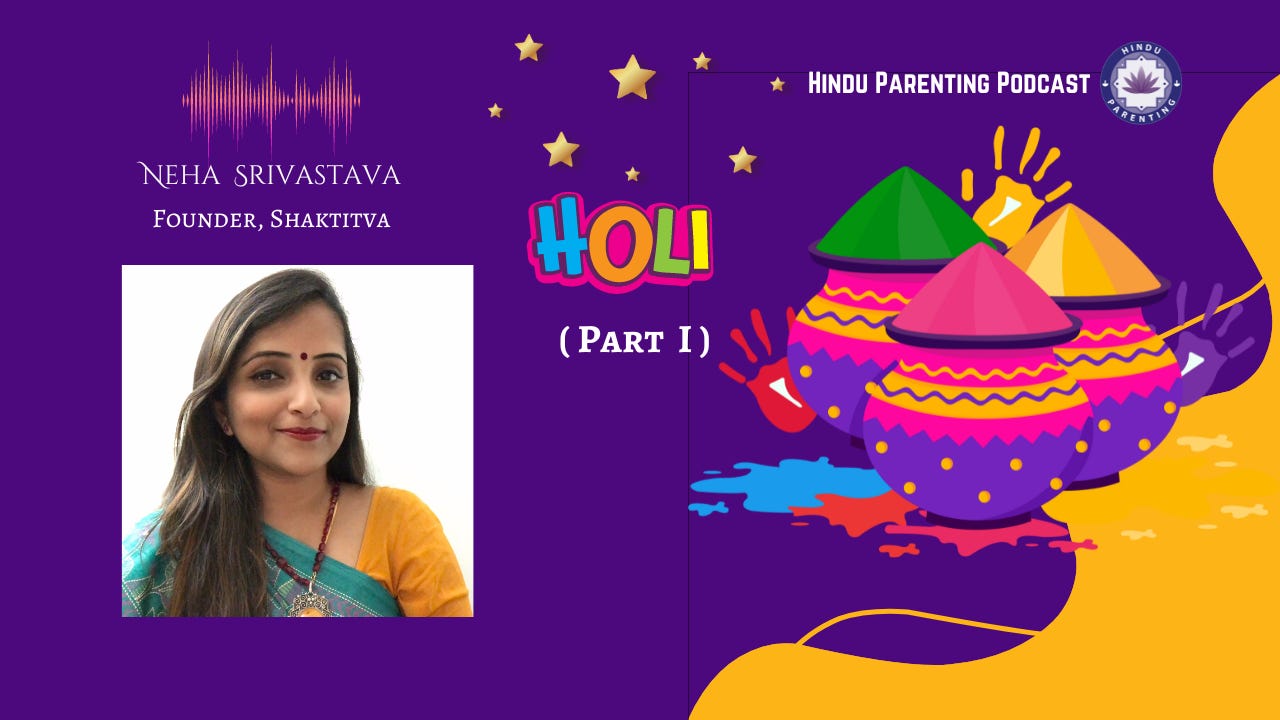


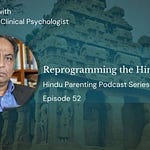

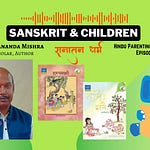

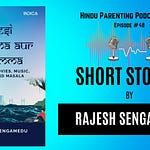
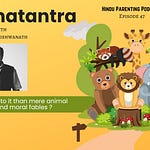
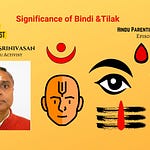
Share this post